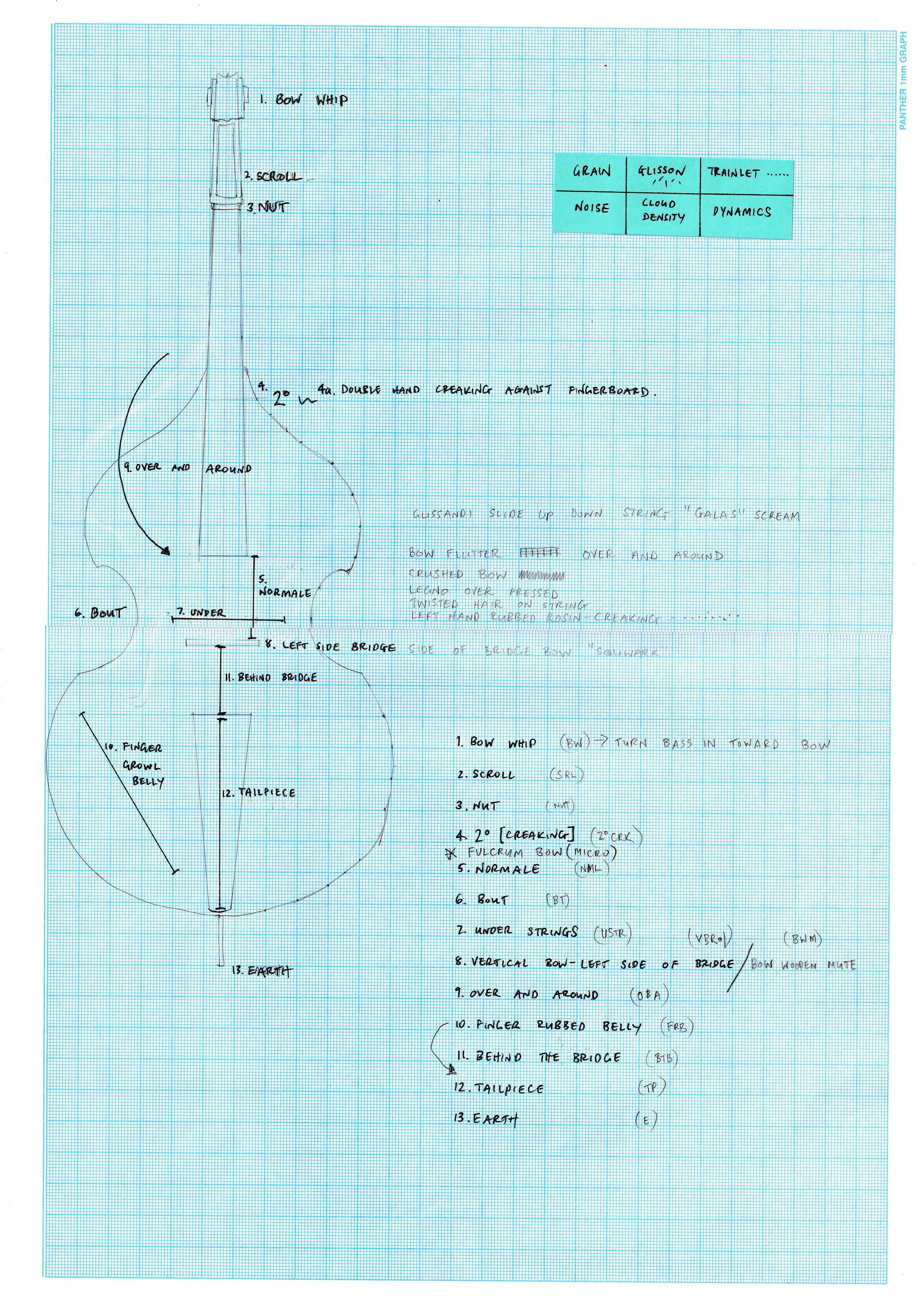Mark Cauvin

Modular Double Bass Technique
The Modular Double Bass Technique is my evolving system for approaching the double bass as a living, architectural instrument.
Each point in my diagram defines a specific interaction between the body, the instrument, and the surrounding acoustic field.
Rather than viewing these as isolated mechanics, I treat them as modules—a network of proportional relationships that translate movement and perception into sound.
The Human Measure
This concept draws inspiration from Le Corbusier’s Modulor image published on the cover of Hermann Scherchen’s Gravesaner Blätter. He proposed the human figure as the universal measure of design.
Just as Le Corbusier used anatomy as a guide for architectural form, I use the human body as the guiding principle for sonic form.
Each gesture on the double bass corresponds to a spatial proportion—bow length to arm extension, string vibration to breath, resonance to posture.
The bass becomes an instrument of architecture, shaped by the physical proportions and kinetic intelligence of the performer.

Sound as Architecture
In The Soundscape: Our Sonic Environment and the Tuning of the World, R. Murray Schafer wrote:
“The human anatomy, therefore, is the best machine we know and it ought to be our model in terms of engineering perfection.” Schafer, R.M. (1977) The Soundscape: Our Sonic Environment and the Tuning of the World, Destiny Books, Rochester, Vermont.
This insight lies at the core of my practice.
When technology, mechanics, and human gesture merge, they must do so in service of acoustic ecology—a balance between sonic invention and human sensitivity.
Every sensor, motor, and bow movement becomes an extension of the body’s own acoustical design.
